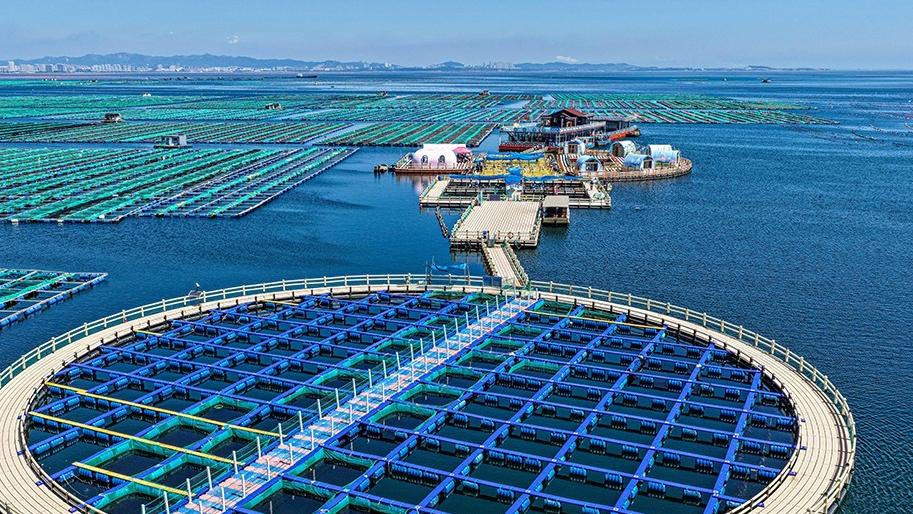China's five autonomous regions see robust economic growth
From 2020 to 2024, the combined GDP of China's five autonomous regions increased from 6.0129 trillion yuan ($869.35 billion) to 8.3766 trillion yuan, helping ethnic areas achieve high-quality development, Duan Yijun, an official from the National Ethnic Affairs Commission of China, revealed at a press conference on Monday.
The press conference, held by the State Council Information Office, is part of the series themed on the high-quality fulfillment of the 14th Five-Year Plan (2021-25).
At the press conference, Duan stated that the Commission has continuously deepened the promotion of national unity and progress.
Duan said multiple measures have been taken to help ethnic regions better integrate into the new development pattern. From 2020 to 2024, the combined GDP of China's five autonomous regions increased with an average annual growth rate of 5.6 percent. Specifically, Southwest China's Xizang Autonomous Region and Northwest China's Xinjiang Uygur Autonomous Region recorded average annual growth rates of 6.1 percent and 6 percent, respectively, Duan noted.
The economic development of autonomous regions has kept pace with that of the whole country, playing a positive role in shaping a unified national market and promoting coordinated national economic growth, Li Chang'an, a professor at the Academy of China Open Economy Studies at the University of International Business and Economics, told the Global Times on Monday.
Li added that the increase is attributable to the country's policy support for ethnic regions, as well as the comprehensive results of local efforts to advance the development of distinctive industries in line with their unique conditions.
During the 14th Five-Year Plan period, efforts have been made to accelerate the high-quality development of ethnic regions through various means such as financial support, industrial guidance, and pilot programs, advancing common prosperity for all ethnic groups, and effectively promoting all ethnic groups to move toward socialist modernization together, according to Duan.
A total of 37.1 billion yuan of central fiscal funds for promoting rural revitalization has been allocated to support ethnic regions in consolidating and expanding the achievements of poverty alleviation and ensuring effective alignment with the advancement of rural revitalization, Duan said.
Up to now, according to Duan, China has carried out pilot projects for common modernization in 38 ethnic counties and cities including Jingning She Autonomous County in East China's Zhejiang Province to explore practical paths for ethnic groups to move toward socialist modernization.
An initiative to upgrade trade and products in ethnic regions has been implemented. A number of ethnic handicraft brands have been created and enhanced to cultivate ethnic handicraft industries.
Leveraging its unique resource advantages, Xinjiang's Dabangcheng District is forging an agro-pastoral circular industrial chain encompassing camel breeding, breed cultivation, and dairy processing. To tackle the challenges in fresh milk transportation, the local authorities have invested over 6.8 million yuan to build seven standardized camel milk collection stations.
Yeljan Obul, a local camel breeder, told the Global Times that he used to travel over 30 kilometers every day to transport camel milk himself. "Now, workers from the milk stations come to collect, which is much more convenient," he said, adding that the government has also provided new equipment, making camel milk more hygienic and of superior quality.
He said that he raises 50 camels and now earns over 200,000 yuan annually.
The Commission has organized efforts to build beautiful and harmonious villages, cultivate distinctive industries like rural tourism, advance initiatives for border revitalization and prosperity, implement plans to enhance border tourism, and provide support to accelerate development in border regions.
Li Chang'an noted that for autonomous regions, high-quality development is mainly reflected in the continuous optimization of the economic and industrial structure and the growing prominence of local competitive industries. It is also evident in the increase in people's incomes and the improvement of living standards, he added.
Economic growth and the enhancement of living standards significantly contribute to fostering a sense of pride and unity among ethnic minority regions within the broader family of the Chinese nation, the expert said.
Furthermore, Duan said that legislative efforts have advanced for ethnic regions. The principle of forging a strong sense of community for the Chinese nation has been written into 11 laws, providing legal support for the law-based governance of ethnic affairs.
Photos
Related Stories
- China's new growth drivers see rapid expansion
- Multiple Chinese provincial-level regions report H1 GDP growth, bolstering national economic confidence
- China registers 5.3 percent GDP growth in H1 2025, showing strong momentum, resilience
- China's GDP expands 5.3 pct year on year in H1 amid challenges
- China Dynamics: China's GDP expands 5.3 pct year on year in H1
- China's GDP expands 5.3 pct year on year in H1
Copyright © 2025 People's Daily Online. All Rights Reserved.









